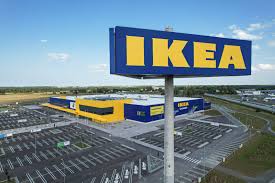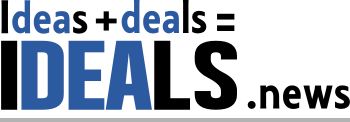
IKEA’s recent acquisition of U.S.-based logistics technology firm Locus marks a strategic turning point in how the furniture giant plans to scale its U.S. operations. Rather than simply treating the deal as a delivery upgrade, the move underscores a broader recalibration of IKEA’s ambitions in America—one driven by rising competition, tariff pressures, and the shifting dynamics of online retail.
Why Locus? Unlocking Smarter Logistics at Scale**
At the heart of IKEA’s decision is Locus’s proprietary AI-powered logistics software, which specializes in grouping orders and optimizing delivery routes to reduce time spent in traffic and improve efficiency. Prior to the deal, IKEA had relied heavily on manual planning processes for route optimization and delivery scheduling. The acquisition promises not only automation but also cost reductions—estimated by IKEA to be as much as €100 million globally, annually.
Beyond cost savings, Locus brings deeper strategic capabilities: it enables more flexible delivery windows, real-time tracking for customers, and adaptive routing adjustments that respond to live traffic conditions. These features are especially valuable for IKEA as it scales its direct-to-consumer and last-mile delivery operations in densely populated U.S. markets, where delays and inefficiencies can erode margin and customer satisfaction.
IKEA intends to pilot the Locus system first in the U.S. and U.K. markets before rolling it out globally—a clear signal that this acquisition is meant to anchor its next-generation supply chain model rather than serve just a regional testbed.
A New Growth Playbook for the U.S. Market
For several years now, IKEA has shifted its U.S. strategy away from the classic big-box suburban model toward a hybrid of urban footprint and omnichannel delivery. Rather than relying solely on large warehouse-style stores, IKEA has increasingly emphasized smaller city-centre showrooms, digital sales, and flexible fulfillment to cater to younger, more urban consumers who prioritize convenience and immediacy.
Online sales already account for a growing share of IKEA’s sales mix—28 percent in its latest fiscal year, up from 11 percent in 2019. The Locus acquisition signals that IKEA sees further scaling of online-to-door convenience as central to its competitive edge in the U.S., especially against strong incumbents like Wayfair and Walmart.
In practice, Locus’s AI engine gives IKEA a technological moat in optimizing delivery logistics—a bottleneck where many pure-play e-commerce firms struggle. By internalizing that capability, IKEA reduces reliance on third-party logistics providers, gains control over routing decisions and capacity allocations, and can more tightly integrate fulfillment decisions with inventory and demand forecasting.
This is not just a defensive move—it is forward-looking. IKEA is locking into a model where growth in the U.S. will increasingly depend not just on what it sells, but how seamlessly and fast it gets products into customers’ hands.
Tariff Pressures and the U.S. Trade Battleground
One question inevitably arises: does this acquisition have anything to do with the elevated tariff environment under the Trump administration? The answer is nuanced.
IKEA has publicly acknowledged that new furniture import tariffs—such as 50 percent on cabinets and vanities, and 30 percent on upholstered furniture—have squeezed its cost structure in the U.S. These additional charges make keeping prices affordable more difficult, particularly in a market where bargain-minded consumers are a core demographic.
However, while the timing suggests IKEA is responding to macro headwinds, the Locus deal addresses a different pressure point—logistics and cost efficiency—rather than mitigating import duties directly. In effect, IKEA appears to be offsetting margin pressure by doubling down on internal operational efficiencies instead of relying purely on supply chain arbitrage or reshoring.
By owning the logistics intelligence layer, IKEA gains levers to manage rising costs, improve delivery margins, and better absorb tariff-driven cost shocks. In this sense, acquisition of Locus is part of a broader defensive posture: not a tariff workaround per se, but a capability play to enhance resilience.
Fitting Into a Broader Tech-Enabled Strategy
The acquisition of Locus is far from IKEA’s first foray into logistics and technology investments. Prior technology plays—such as warehouse management partnerships and investments in services like TaskRabbit—have been part of a multi-year push to build a more tech-driven backbone to the IKEA operations. The Locus deal is the logical next step: installing intelligence at the delivery layer, which sits at the intersection of demand, inventory, and customer experience.
What’s compelling is that IKEA is not absorbing Locus into its structure entirely. The pact allows Locus to continue operating independently and serving non-IKEA clients—a design that suggests IKEA is positioning Locus as both an internal engine and a potential stand-alone profit center. This helps preserve talent, innovation focus, and market credibility for Locus’s existing clientele.
Moreover, the acquisition strengthens IKEA’s ability to synchronize demand planning, inventory flows, and delivery execution more tightly. As IKEA increasingly pursues just-in-time deliveries, dark-store models, or micro-fulfillment nodes, having a logistics “brain” in-house becomes a strategic necessity.
Strategic Implications and Risks
From a growth perspective, IKEA’s move enables it to scale more aggressively in U.S. metros where last-mile logistics often determine the cost floor for e-commerce. With Locus in hand, IKEA can better tailor delivery offerings (e.g., same-day, two-hour windows) to competitive expectations and consumer standards.
However, execution risks remain. Integrating a high-tech AI firm into a legacy retail and supply chain structure is nontrivial. Ensuring that the algorithms translate into real-world gains—especially across fragmented American highways and municipal delivery constraints—will require rigorous testing, local calibration, and ongoing investment.
Additionally, the independence arrangement for Locus means that IKEA has less direct operational control over its new asset initially; aligning incentives and ensuring that Locus’s roadmap remains symbiotic with IKEA’s timeline will be critical.
By acquiring Locus, IKEA is signaling a fundamental shift: the future of its U.S. growth will no longer be about just store locations or product assortment, but about mastering fulfillment and customer experience at the delivery frontier. It’s a bet that controlling the “last mile” through AI-powered logistics will deliver stronger margins, better customer satisfaction, and resilience against tariff pressure. In that sense, Locus is not just a parcel planning tool—it is a linchpin in IKEA’s U.S. transformation strategy.
(Source:www.business-standard.com)
Why Locus? Unlocking Smarter Logistics at Scale**
At the heart of IKEA’s decision is Locus’s proprietary AI-powered logistics software, which specializes in grouping orders and optimizing delivery routes to reduce time spent in traffic and improve efficiency. Prior to the deal, IKEA had relied heavily on manual planning processes for route optimization and delivery scheduling. The acquisition promises not only automation but also cost reductions—estimated by IKEA to be as much as €100 million globally, annually.
Beyond cost savings, Locus brings deeper strategic capabilities: it enables more flexible delivery windows, real-time tracking for customers, and adaptive routing adjustments that respond to live traffic conditions. These features are especially valuable for IKEA as it scales its direct-to-consumer and last-mile delivery operations in densely populated U.S. markets, where delays and inefficiencies can erode margin and customer satisfaction.
IKEA intends to pilot the Locus system first in the U.S. and U.K. markets before rolling it out globally—a clear signal that this acquisition is meant to anchor its next-generation supply chain model rather than serve just a regional testbed.
A New Growth Playbook for the U.S. Market
For several years now, IKEA has shifted its U.S. strategy away from the classic big-box suburban model toward a hybrid of urban footprint and omnichannel delivery. Rather than relying solely on large warehouse-style stores, IKEA has increasingly emphasized smaller city-centre showrooms, digital sales, and flexible fulfillment to cater to younger, more urban consumers who prioritize convenience and immediacy.
Online sales already account for a growing share of IKEA’s sales mix—28 percent in its latest fiscal year, up from 11 percent in 2019. The Locus acquisition signals that IKEA sees further scaling of online-to-door convenience as central to its competitive edge in the U.S., especially against strong incumbents like Wayfair and Walmart.
In practice, Locus’s AI engine gives IKEA a technological moat in optimizing delivery logistics—a bottleneck where many pure-play e-commerce firms struggle. By internalizing that capability, IKEA reduces reliance on third-party logistics providers, gains control over routing decisions and capacity allocations, and can more tightly integrate fulfillment decisions with inventory and demand forecasting.
This is not just a defensive move—it is forward-looking. IKEA is locking into a model where growth in the U.S. will increasingly depend not just on what it sells, but how seamlessly and fast it gets products into customers’ hands.
Tariff Pressures and the U.S. Trade Battleground
One question inevitably arises: does this acquisition have anything to do with the elevated tariff environment under the Trump administration? The answer is nuanced.
IKEA has publicly acknowledged that new furniture import tariffs—such as 50 percent on cabinets and vanities, and 30 percent on upholstered furniture—have squeezed its cost structure in the U.S. These additional charges make keeping prices affordable more difficult, particularly in a market where bargain-minded consumers are a core demographic.
However, while the timing suggests IKEA is responding to macro headwinds, the Locus deal addresses a different pressure point—logistics and cost efficiency—rather than mitigating import duties directly. In effect, IKEA appears to be offsetting margin pressure by doubling down on internal operational efficiencies instead of relying purely on supply chain arbitrage or reshoring.
By owning the logistics intelligence layer, IKEA gains levers to manage rising costs, improve delivery margins, and better absorb tariff-driven cost shocks. In this sense, acquisition of Locus is part of a broader defensive posture: not a tariff workaround per se, but a capability play to enhance resilience.
Fitting Into a Broader Tech-Enabled Strategy
The acquisition of Locus is far from IKEA’s first foray into logistics and technology investments. Prior technology plays—such as warehouse management partnerships and investments in services like TaskRabbit—have been part of a multi-year push to build a more tech-driven backbone to the IKEA operations. The Locus deal is the logical next step: installing intelligence at the delivery layer, which sits at the intersection of demand, inventory, and customer experience.
What’s compelling is that IKEA is not absorbing Locus into its structure entirely. The pact allows Locus to continue operating independently and serving non-IKEA clients—a design that suggests IKEA is positioning Locus as both an internal engine and a potential stand-alone profit center. This helps preserve talent, innovation focus, and market credibility for Locus’s existing clientele.
Moreover, the acquisition strengthens IKEA’s ability to synchronize demand planning, inventory flows, and delivery execution more tightly. As IKEA increasingly pursues just-in-time deliveries, dark-store models, or micro-fulfillment nodes, having a logistics “brain” in-house becomes a strategic necessity.
Strategic Implications and Risks
From a growth perspective, IKEA’s move enables it to scale more aggressively in U.S. metros where last-mile logistics often determine the cost floor for e-commerce. With Locus in hand, IKEA can better tailor delivery offerings (e.g., same-day, two-hour windows) to competitive expectations and consumer standards.
However, execution risks remain. Integrating a high-tech AI firm into a legacy retail and supply chain structure is nontrivial. Ensuring that the algorithms translate into real-world gains—especially across fragmented American highways and municipal delivery constraints—will require rigorous testing, local calibration, and ongoing investment.
Additionally, the independence arrangement for Locus means that IKEA has less direct operational control over its new asset initially; aligning incentives and ensuring that Locus’s roadmap remains symbiotic with IKEA’s timeline will be critical.
By acquiring Locus, IKEA is signaling a fundamental shift: the future of its U.S. growth will no longer be about just store locations or product assortment, but about mastering fulfillment and customer experience at the delivery frontier. It’s a bet that controlling the “last mile” through AI-powered logistics will deliver stronger margins, better customer satisfaction, and resilience against tariff pressure. In that sense, Locus is not just a parcel planning tool—it is a linchpin in IKEA’s U.S. transformation strategy.
(Source:www.business-standard.com)














